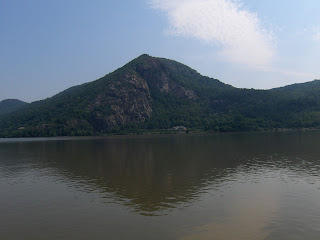Saturday, June 23, 2012
The Hudson
Imagine stumbling onto the beauty of the Hudson Valley by accident.Englishman Henry Hudson was looking for a quick passage to China as he sailed along America's north Atlantic coast in 1609.Hudson thought he found what he was looking for when he entered New York bay and what is now the river named for him. He and his crew of 18-20 men, sailing on a ship called the Half Moon, traveled about 150 miles up the river near what is now Albany before realizing it would not lead them to their destination of choice.
Early maps and sailing journals tell us that the area was viewed as inhospitable, with wild animals, poisonous snakes, mountains and thick forests too dense to traverse. The river itself was seen as treacherous, especially in the stretch known as the Hudson Highlands.
The 1600s saw the influx of colonists and the area, first known as New Amsterdam, became part of New York, controlled by Britain. As the quest for independence from the crown began to unfold, the Hudson River played a major role.
Although the events that occurred in the Hudson Highlands during the Revolutionary War were not the war's most decisive, it remained an area to which the British and the Americans gave much of their attention.
In 1775, the Americans decided they must fortify the area, protecting the river used to transport troops and supplies. Had the British been successful in gaining control of the river, it would have literally broken apart the American forces.
After seeing the effects on his troops from a lack of properly trained officers, Washington pleaded with the newly formed government for the formation of a military academy. But it wasn't until after his death that the United States Military Academy at West Point was established in 1802 under President Thomas Jefferson.
Commuter trains and freight trains are constantly moving on both shores of the Hudson River.
The Mid-Hudson Suspension Bridge, opened in 1930, is one of the oldest bridges spanning the Hudson River. The massive Conrail railroad bridge has been in place for more than 100 years and once made Poughkeepsie an important railroad center.
The Hudson is still an important commercial waterway today, as it has been for centuries.
Here are the ruins of a full size castle, Bannerman Castle. The scene hauntingly could be somewhere in Europe.
I have to say, today's scenery has been the most breathtaking of all days on this trip.
Subscribe to:
Post Comments (Atom)











No comments:
Post a Comment